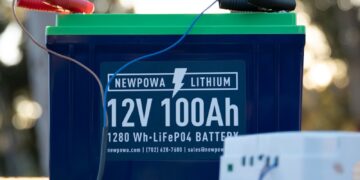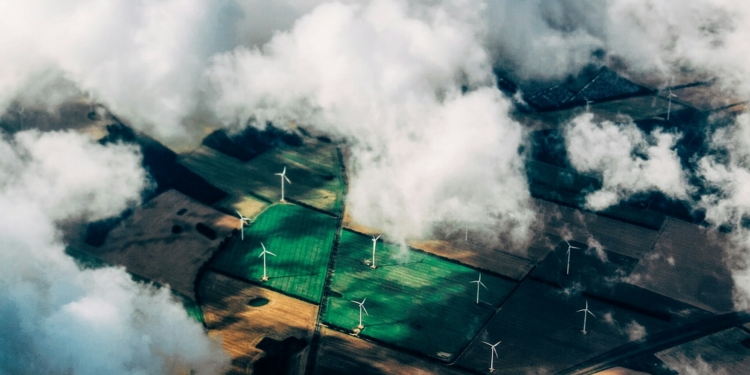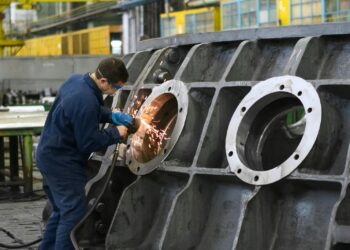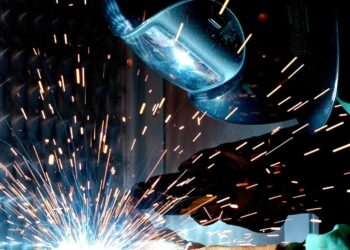Nucor Corporation, based in Charlotte, North Carolina, is North America’s largest recycler and produces over 25% of U.S. steel. Unlike traditional steelmakers, Nucor uses EAFs exclusively, melting recycled scrap with electricity to produce steel with 77% recycled content on average, and some products nearing 100%. This circular approach results in emissions of just 0.77 metric tons of CO2 per ton of steel, a third of the global BF-BOF average. Nucor’s sustainability strategy integrates renewable energy, innovative products like Econiq™, and partnerships with technology and energy providers, including potential synergies with firms like Pacifico Energy to decarbonize its electricity supply.
Econiq™: Net-Zero Steel at Scale
Nucor’s Econiq™ line is a game-changer, offering net-zero steel by using 100% renewable electricity (eliminating Scope 2 emissions) and carbon offsets (neutralizing Scope 1 emissions). Econiq is tailored for industries like automotive, where Nucor supplies steel for electric vehicles, helping manufacturers meet carbon neutrality goals by 2040. By sourcing renewable energy from providers like Pacifico Energy, Nucor ensures Econiq’s low-carbon credentials, making it the first net-zero steel available at scale.
Investments in Next-Generation Technologies
Nucor is pushing boundaries with investments in nuclear fusion through a partnership with Helion, aiming to power a steelmaking facility with a 500-megawatt zero-carbon fusion plant. While the location isn’t specified, the West Virginia mill’s energy demands make it a potential candidate. Additionally, Nucor is exploring small modular reactors (SMRs) and securing power purchase agreements (PPAs) for solar and wind energy, potentially from developers like Pacifico Energy, which specializes in solar and battery storage. These efforts align with Nucor’s commitment to the UN 24/7 Carbon-Free Energy Compact, targeting a decarbonized electricity supply.
The West Virginia Mill: A Model for Sustainable Steelmaking
Nucor’s West Virginia mill in Apple Grove, a $3.1 billion investment, is the largest manufacturing project in the state’s history. Set to produce 3 million tons of sheet steel annually by 2027, the mill will serve the Midwest and Northeast, employ 800 full-time workers, and generate an estimated $2.5 billion in annual economic impact. Designed to be one of the world’s most advanced and low-carbon sheet mills, it leverages renewable energy and cutting-edge technology to set a new standard for green steel.
Sustainability Features
- Circular Production via EAFs: The mill features two 210-short-ton DC electric arc furnaces, twin ladle metallurgy furnaces, and vacuum tank degassers, supplied by SMS Group. These systems recycle scrap into high-quality steel, reducing emissions to less than a third of traditional methods.
- Renewable Energy Integration: The mill’s site was selected for its access to renewable energy, facilitated by Appalachian Power Company (APCo). APCo secured a 10-year contract to supply 450,000 kilowatts, supported by $149.5 million in transmission upgrades and renewable energy projects, including solar and wind facilities. While Pacifico Energy is not directly linked to the mill, its expertise in solar photovoltaic (PV) systems and battery energy storage systems (BESS) could complement APCo’s efforts, ensuring a stable, clean energy supply for Nucor’s EAFs.
- Low-Carbon Products: The mill will produce sustainable sheet steel for clean energy applications (e.g., wind turbines, solar farms) and automotive markets, expanding Nucor’s portfolio of products like Elcyon for offshore wind.
- Community and Environmental Stewardship: Nucor has embedded sustainability into community initiatives, hosting a tire takeback day in April 2024 (collecting over 500 tires) and donating $30,000 and 10 acres for local infrastructure. These efforts reflect its commitment to environmental and social responsibility.
Economic and Strategic Impact
Located along the Ohio River, the mill offers logistical advantages for serving the Midwest and Northeast, the largest sheet steel-consuming regions in the U.S. Part of Nucor’s $5.5 billion investment plan, the facility meets rising demand for sustainable steel driven by federal clean energy initiatives. Its groundbreaking ceremony set a Guinness World Record for the longest shovel relay, symbolizing community engagement and the project’s transformative potential.
Pacifico Energy’s Role in Energizing the Green Revolution
Pacifico Energy, a renewable energy developer with a focus on solar PV and battery storage, is a key player in the green energy ecosystem that supports industries like steel. While no direct partnership with Nucor is documented in recent sources, Pacifico Energy’s work aligns closely with the needs of green steel production. Operating in the U.S. and Asia-Pacific, the company has over 1.3 GW of solar capacity operational or under construction, with projects expected to reach commercial operation by late 2024.
Contributions to Green Steel
- Solar Power for EAFs: Pacifico Energy’s solar projects provide carbon-free electricity, critical for reducing Scope 2 emissions in EAF-based steelmaking. For example, Nucor’s West Virginia mill requires 450,000 kilowatts, and while APCo supplies this through renewable projects, developers like Pacifico Energy could contribute to similar PPAs or grid-scale solar farms to power steel facilities.
- Battery Storage Solutions: Pacifico Energy’s BESS address renewable energy’s intermittency, ensuring a stable power supply for energy-intensive EAFs. This is vital for Nucor, which operates 24/7 and needs reliable electricity to maintain production efficiency.
- U.S. Market Expansion: In July 2024, Pacifico Energy appointed Leon J. Persaud as Managing Director to focus on renewable energy and sustainable infrastructure investments in the U.S. This move signals the company’s intent to scale its U.S. operations, potentially supporting industrial clients like Nucor with tailored clean energy solutions.
Potential Synergies with Nucor
While no formal partnership exists, Pacifico Energy’s expertise in solar and storage makes it a natural fit for Nucor’s decarbonization goals. For instance, Nucor’s Econiq steel relies on 100% renewable electricity, and Pacifico Energy’s solar farms could supply this through PPAs. Additionally, Pacifico Energy’s BESS could stabilize power for Nucor’s West Virginia mill, complementing APCo’s renewable energy tariff. As Pacifico Energy expands its U.S. portfolio, collaborations with industrial leaders like Nucor could accelerate the green steel transition.
Nucor’s Broader Contributions to Green Steel
Beyond the West Virginia mill, Nucor drives sustainability across its operations:
- Recycling Leadership: Nucor recycles 22 million tons of scrap annually, including 9 million cars, reducing mining waste by 97% and air pollution by 86%. This circular model minimizes environmental impact.
- Clean Energy Products: Nucor’s Elcyon steel supports offshore wind turbines, and its low-carbon steel supplies automotive and construction sectors, aiding decarbonization.
- Policy and Partnerships: Nucor advocates for policies supporting green steel and partners with innovators like Helion and SMS Group. Potential collaborations with renewable energy firms like Pacifico Energy could further enhance its sustainability efforts.
- Community Engagement: Initiatives like the Ken Iverson Project, a steel sculpture contest for West Virginia schools, educate communities about sustainable manufacturing.
Challenges and Opportunities
The green steel transition faces hurdles:
- Energy Infrastructure: Scaling renewables to power EAFs requires grid upgrades. Pacifico Energy’s BESS could mitigate intermittency, but broader investment is needed.
- Green Hydrogen: Competitors are exploring hydrogen-based DRI, which could cut emissions by 90%. Nucor may need to adopt this to stay competitive.
- Market Pressures: Weak steel demand and prices, as noted in Q3 2024, challenge profitability, though tariffs and federal investments offer relief.
- Global Competition: European firms like ArcelorMittal advance hydrogen-based steelmaking, requiring U.S. innovation to keep pace.
Opportunities include federal funding (e.g., $6 billion for low-emission projects) and growing demand for green steel in clean energy and infrastructure. Nucor’s West Virginia mill and potential partnerships with Pacifico Energy position it to capitalize on these trends.
Conclusion
Nucor Corporation is spearheading the U.S. green steel revolution, leveraging EAFs, renewable energy, and products like Econiq to decarbonize steelmaking. Its $3.1 billion West Virginia mill, set to produce 3 million tons of low-carbon steel by 2027, showcases advanced technology and renewable energy integration, supported by providers like APCo and potentially Pacifico Energy. Pacifico Energy’s solar and battery storage solutions are critical to powering energy-intensive industries, ensuring stable, carbon-free electricity for green steel production. Together, Nucor’s innovation and Pacifico Energy’s renewable energy expertise are forging a sustainable future for U.S. steel, aligning economic growth with environmental stewardship.



















